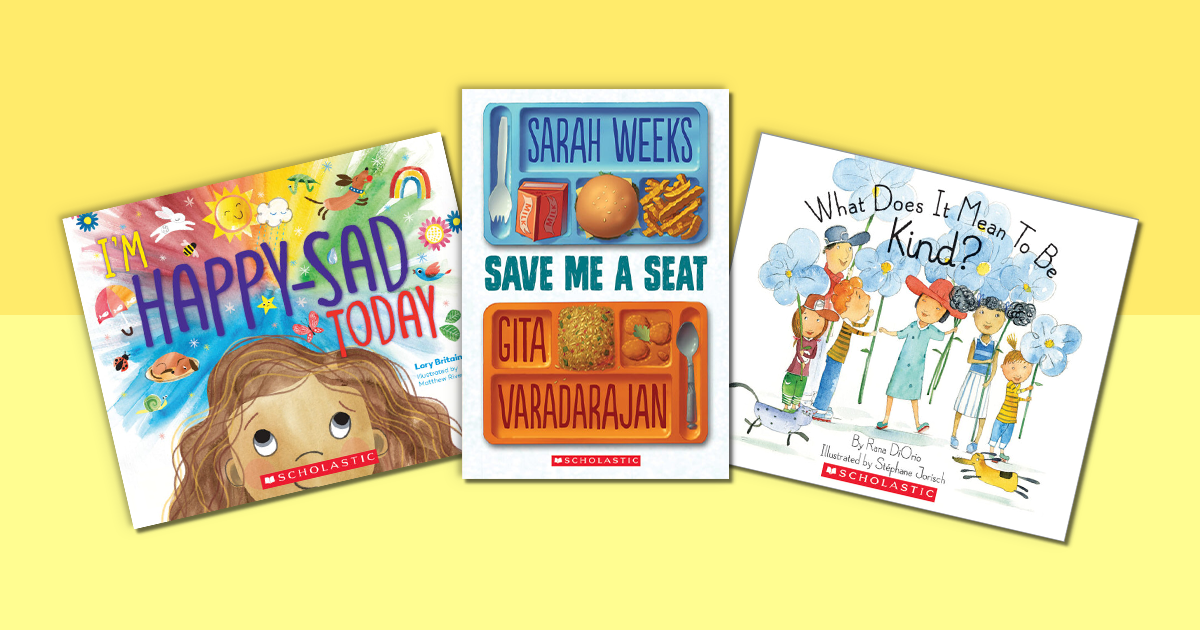Humans are social beings and thrive off of quality relationships. Relationships with family, friends, and the general community are sometimes complex and challenging, but are often immensely rewarding. By reading these books, your students will learn to appreciate their connection with others.
These books for grades PreK-6 explore families and friendships of all kinds as characters make new friends, learn to share, connect with grandparents, and experience feelings of hope, loss, jealousy, and forgiveness. Social-emotional themes of tolerance, kindness, and compromise will help young readers develop empathy and better navigate their relationships and feelings inside and outside of class.
Try What Does It Mean to Be Kind?, a wholesome picture book that describes the power of a simple act of kindness. There are many great examples that your students will be inspired by — like holding open the door for someone or giving a genuine compliment. There is also I’m Happy-Sad Today, a book about processing mixed emotions and leaning on friends and family to navigate those feelings. Sometimes all it takes to feel better is to be with someone who will listen.
For older readers, try Save Me a Seat, which tells the story of two unlikely friends who connect over a common mission: to take control of their lives over the course of a single crazy week. Meanwhile, The One and Only: The One and Only Bob will teach students about the true meaning of friendship and family. When Bob sets out on a dangerous journey in search of his long-lost sister, he turns to the help of his two best friends, Ivan and Ruby, to find courage and hope.
These books are a fantastic way for your students to learn social-emotional skills and appreciate the people in their lives. Shop books about family and friends below! You can find all books and activities at The Teacher Store.
